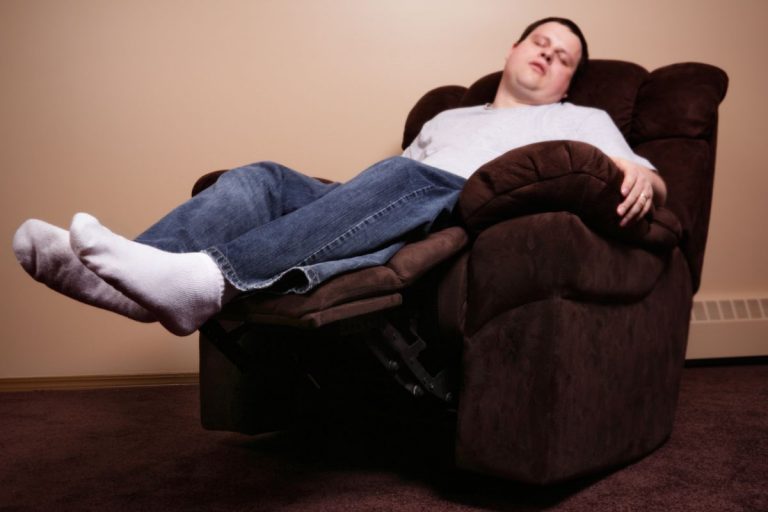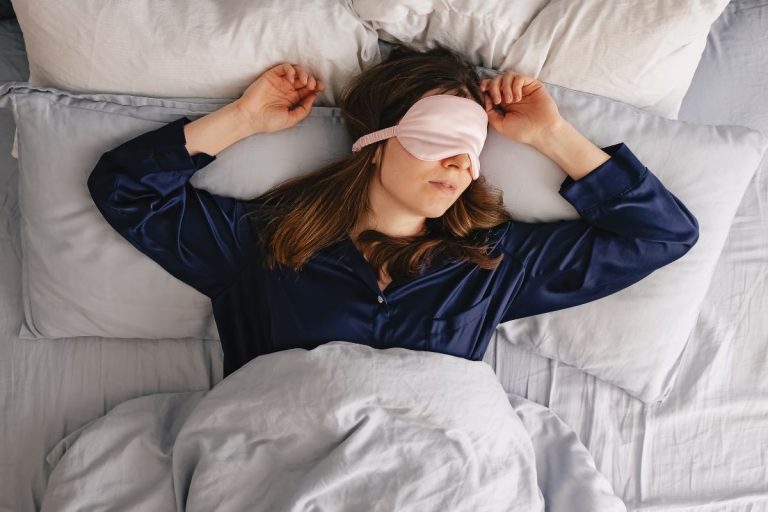Snoring is considered to be a part of sleep-disordered breathing. Often it can indicate a harmless narrowing in the airways that can be caused by weight gain or one’s age. However, snoring can often be an indicator of a more serious problem, like obstructive sleep apnea.
However, not every case of snoring is immediately a case of sleep apnea. That is why it is important to recognize the similarities and differences between sleep apnea snoring and the regular type of snoring. Therefore, in the following paragraphs, we’ll observe sleep apnea and snoring, and see how each occurs and how can we recognize the differences.
Sleep Apne And Snoring Overview
- Sleep apnea has serious health consequences, while regular mild snoring does not.
- Regular, mild snoring doesn’t have to be a health issue; it can be an isolated occurrence.
- Sometimes, however, mild snoring can indicate mild sleep apnea, which does require treatment.
- People who have heart disease or history of a stroke are at risk of developing sleep apnea and sleep apnea related snoring.
- People can have sleep apnea even if they don’t snore.
- Mild snoring can be mitigated and prevented with weight loss and physical activity.
- People who are overweight and male are more likely to develop snoring and breathing difficulties.
What Is Snoring?
Snoring In Adults
Snoring is a noisy sound that occurs during sleep and indicates an obstruction of the free flow of air through the mouth, nose and the airway passages. In the airway area, the tissues, especially the tongue and the upper throat are collapsible. When we say collapsible, we mean that this area can fall backward into the throat as you sleep, creating an obstruction that results in loud snoring. The tongue and upper throat fall back, where they meet the soft palate and uvula. Because they’re so close to each other in that scenario, when breathing, they strike each other and cause vibration, or snoring.
This scenario of snoring is usually typical of adults and can be an indicator of some serious sleep breathing disorders. Most frequently, snoring is an indicator of sleep apnea, which can be further tested and determined by an otolaryngologist or a sleep specialist. According to the American Academy of Otolaryngology and general studies, 45% to 50& of normal adults snore at least occasionally, while 25% are habitual snorers. Snoring also occurs more frequently in males and overweight people, and it generally worsens with age.
Snoring In Children
Snoring can also occur in children. Usually, this indicates problems with tonsils and adenoids. However, snoring in children isn’t that frequent. For example, in approximately 27% of children there can be occasional occurrences of minor snoring. In less than 12% of children, there can be serious snoring indicators, while less than 5% of children experience snoring caused by obstructive sleep apnea.
Either way, a chronically snoring child should be examined by a specialist. In cases of problems with tonsils and adenoids, the specialist might recommend a tonsillectomy and adenoidectomy. In other cases, the specialist might recommend weight loss, asthma and allergy treatment, septum examination, or obstructive sleep apnea examination.
Causes Of Snoring
Regular snoring in adults is usually caused by;
- Poor tongue and throat muscle tone – the muscles in the upper throat and the tongue are too relaxed. This causes them to fall back into the airway and create a breathing obstruction. Some muscle relaxation is normal during sleep, but it becomes a problem when the muscles become too relaxed. Such levels of relaxation can be a result of excessive alcohol or drug consumption.
- Enlarged tonsils and adenoids – this is an issue that usually occurs in children, but some adults may experience it as well. This usually occurs in adults that are overweight and have excess soft tissue, or in adults who experience frequent nasal congestions and have to compensate by breathing through the mouth.
- Obstructed nasal airways – snoring can be caused by a stuffed or blocked nose. Because the person cannot breathe properly through the nose, the whole breathing process occurs in the throat. This creates an exaggerated vacuum in the throat. As a result, the floppy tissues in the throat pull together and create breathing vibrations, or snoring.
- Nasal septum deformities – snoring can occur in people who have nasal septum/septal deformities. A deviated septum is a deformity of the wall that separates one nostril from the other and is the most common type of nasal septum deformities. It can cause breathing obstructions, which further cause throat muscle issues and snoring.
- Long soft palate and uvula – snoring can occur in people that have a longer soft palate. A longer palate narrows the opening from the nose into the throat. Such excessive length of the soft palate or uvula creates a noisy case of snoring. This occurs because of the relaxed muscles and relaxed breathing during sleep.
Tips For Snore-Free Sleep
For those who experience occasional, mild snoring, we have some tips for snore-free sleep;
- Weight loss and physical activity – it is essential you adopt a healthy and athletic lifestyle to reduce or prevent snoring. Weight loss and physical activity will strengthen your muscles and reduce fat or excess tissue in the body, as well as in the neck and throat area.
- Reduce pill intake – tranquilizers, sleeping pills, and antihistamines can promote sleep disturbances and snoring. So, make sure to avoid them before bedtime if you want a snore-free, good night’s sleep.
- Reduce alcohol and heavy meals – drinking alcohol and eating heavy meals before bedtime can contribute to snoring. So, make sure to avoid drinking alcohol and eating heavy meals or snacks at least 3 hours before bedtime.
- Sleep on your left side – sleeping on the left side is known to keep the airways open and reduce snoring. Also, it mitigates the effects of heartburn and acid reflux, which can also cause snoring and burping during sleep. Sleeping on the left side is, however, not recommended to people with heart disease; instead, they should sleep on the right side to avoid unnecessary pressure on the heart.
- Establish healthy sleep hygiene – going to bed at the same time, taking a warm shower before bed, and staying away from gadgets before bedtime will all contribute to your better sleep. Make sure to take care of yourself, and treat your bedroom as a sleeping haven. This way you will sleep more tightly and might prevent possible sleep disturbances.
What Is Sleep Apnea Snoring?
Sleep apnea is one of the most frequent sleep breathing disorders. In the past few years, there have been millions of new sleep apnea cases. The thing sleep apnea cases have in common is snoring. This is generally a sign and main indicator that snoring one experiences is connected to obstructive sleep apnea. OSA is characterized by snoring and numerous breathing pauses that appear during sleep. These are known as apneas and hypopneas and are measured by the Apnea-Hypopnea Index or AHI. Sleep apnea patients can experience anywhere between 30 to 300 of such breathing pauses during sleep.
Sleep apnea snoring, therefore, usually occurs alongside the breathing pauses or breathing cessation. If a person snores and then gasps for air, chances are they have OSA. Polysomnography is used to examine if a person has sleep apnea. It does that by identifying snoring, breathing difficulties, breathing cessations, and oxygen levels while the patient is sleeping.
Telltale Signs Of Sleep Apnea Snoring
Snoring is common in almost every adult. But, how can you differentiate between regular, harmless snoring and sleep breathing disorders like sleep apnea? Here are some main signs that can indicate OSA and that it is time to pay a little visit to the doctor;
- Snoring volume – if a person snores lightly, chances are they’re experiencing regular snoring, which is usually harmless. However, if the snoring volume is deeper, more profound, and louder, there’s a great chance that one is suffering from sleep apnea. The more audible the snorts are, the more they indicate a larger issue.
- Breathing difficulties (gasping for air) – when a person snores during sleep, but the snoring gets interrupted by episodes of gasps, choking sounds, or pauses in breathing, chances are they have obstructive sleep apnea. Sleep apnea patients often snore but seem to be breathless.
- Snoring frequency – regular snoring tends to occur occasionally. However, sleep apnea snoring occurs almost every night. Even when the person doesn’t have nasal congestion or symptoms of flu/cold, they still snore every night, and that is a clear indication of sleep apnea.
If you experience any of the aforementioned events and symptoms, make sure to contact your doctor. You should be evaluated for sleep apnea if your further experience daytime sleepiness, fatigue, and high blood pressure. If you experience the aforementioned symptoms, but you also suffer from heart disease or you have a history of a stroke, you should contact your doctor as soon as possible.
Treatment Of Sleep Apnea Snoring
The treatment of sleep apnea snoring largely depends on the diagnosis and the severity of the sleep apnea. However, the most common treatment options include;
- CPAP therapy – OSA is often treated using the CPAP machine. CPAP or continuous positive airway pressure is a machine that delivers air pressure through a nasal or full-face mask during sleep. The treatment can be also done with other PAP machines, like APAP or BPAP, depending on the required pressure settings for a patient. CPAP machine is effective against snoring, breathing pauses, and cessation, and generally improves the sleep quality of the person receiving the therapy.
- Oral appliances – these appliances are usually custom-fit, but can also be bought without such feature (one size fits all). Either way, they are used for lower jaw repositioning, or tongue securing. The lower jaw is generally pushed forward to keep the airways and the throat open. On the other hand, the tongue is secured to prevent it from collapsing backward into the throat. Oral appliances are usually fitted by a dentist, oral surgeon, or otolaryngologist.
- Uvulopalatopharyngoplasty (UPPP) – this is a surgery that is used for snoring and sleep apnea treatment. In this surgery, the excess soft palate tissue is being removed. After the tissue is removed, the remaining tissue heals and hardens, so it prevents vibrations and snoring. There is a UPPP option that doesn’t include surgery; the soft palate is being hardened by an irritating substance that causes stiffness of the area. Also, there is an option of pillar implants in the soft palate area, to achieve the same effects.
- Genioglossus advancement (GGA) – this is a surgery where a portion of the chin is being moved forward. With this procedure, the tongue is also being moved forward as well as the lower jaw. This prevents the tongue from collapsing during sleep, as well as ensure that the airways are widened for better, snore-free breathing.
So, How Can You Know If You Simply Snore Or Have OSA?
- Make sure to do thorough research on the topic.
- Meet a sleep- or medical specialist and discuss your concerns.
- Opt for treatment, regardless of whether you experience mild snoring or you have OSA; treatment can be crucial.
- Know that snoring, even though common, is not a natural occurrence.
- Carefully consider the health risks of snoring.
- Consider your partner, family, and roommates and how your snoring affects their sleep or lack of it.
Final Thoughts
Snoring is a problem for a lot of people and their partners. It is known to cause serious issues in relationships and marriages. However, snoring isn’t just a social issue, but also a medical one primarily. So, if you experience snoring, and your partner expresses their worries and issues, make sure to consider making some changes. In case of serious snoring issues, accompanied by breathing difficulties, gasps and choking sounds, make sure to consult with your doctor as soon as you can.





